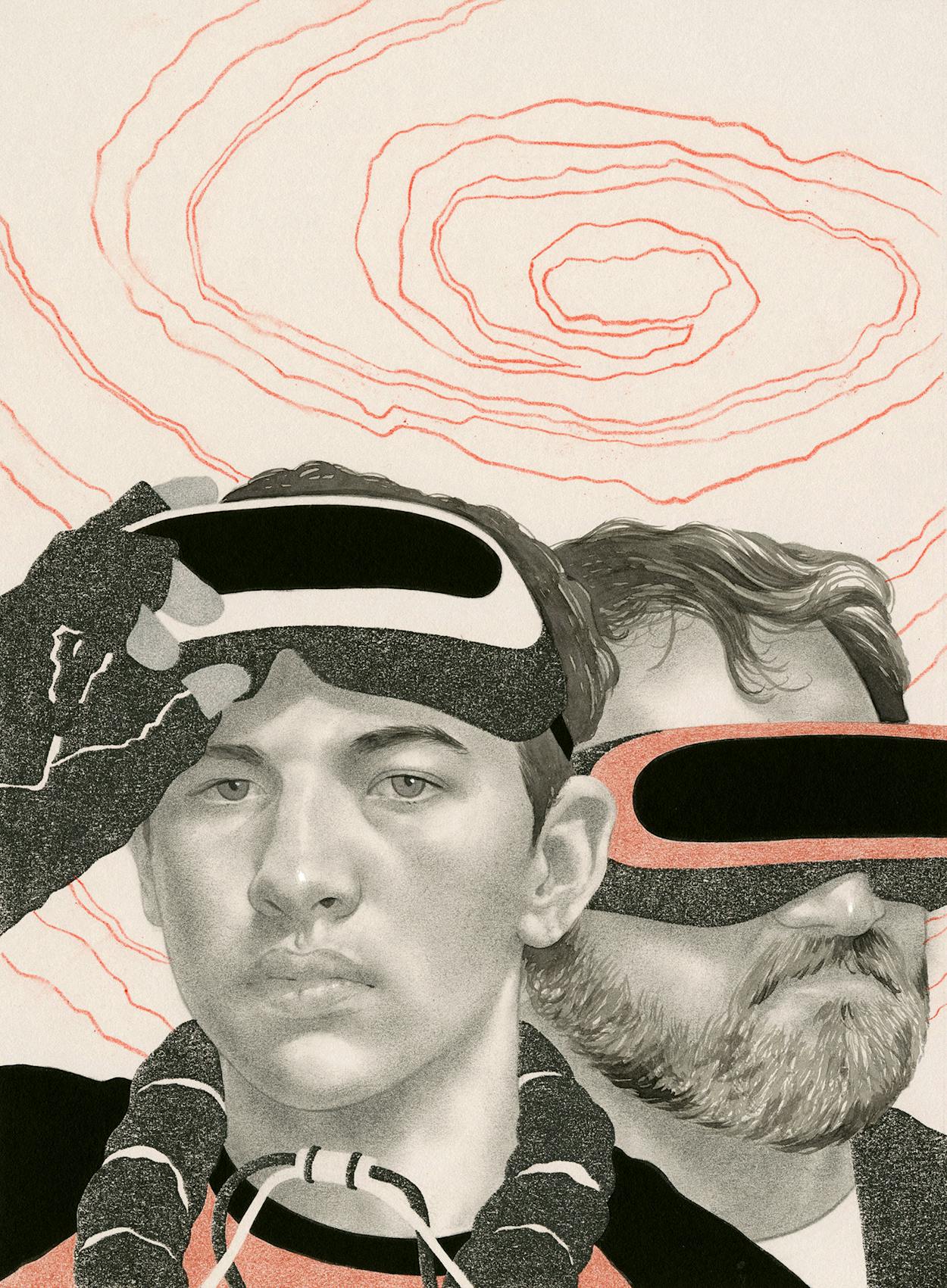Tye Sheridan and Ernest Cline have struck up an unlikely friendship. Sheridan is 21, and Cline will turn 46 on March 29—the day that Steven Spielberg’s Ready Player One, the movie that forged their bond, is released. Sheridan, who was raised in Elkhart, will star as Wade Owen Watts (and Watts’s virtual-reality alter ego, Parzival), the character the Austin-based Cline created in his 2011 best-selling science fiction novel. In the book and the movie, Watts/Parzival—in order to inherit the fortune of a late billionaire—must decipher clues left behind by a man who, like Cline, is obsessed with the eighties. To pull that off, Sheridan also had to familiarize himself with the decade’s cultural touchstones. His new friend, also the film’s co-writer, was all too eager to help.
Texas Monthly: Where did the two of you first meet?
Ernest Cline: It was here [at the Alamo Drafthouse on South Lamar, in Austin]. We took my DeLorean for a spin. I was like, “You drive stick?” And Tye said, “Yeah, I learned on my dad’s truck on the farm.” This is a real Texas kid—no problem. He handled it fine. So I got Parzival in my actual DeLorean.
Tye Sheridan: There’s this crazy race sequence at the beginning of the movie, and my character drives a DeLorean.
EC: During filming, they [told Sheridan], “Look out the back window.” And [he] was like, “You can’t see shit out of the back window [of a DeLorean].”
TS: You’ve got to open the door to look out! So [in the movie], Parzival literally opens the door and looks out the back.
TM: In the novel, Parzival has to unravel eighties pop culture references, which are largely drawn from Steven Spielberg films. What was it like to have Spielberg direct a movie based on a book that draws on things that wouldn’t have existed without him?
EC: Well, there are Star Wars references too. But it’s crazy. He and George Lucas are my two great heroes.
TS: He’s every kid’s hero—he’s impacted and influenced my life in so many ways. Once you start production, you’re solely focused on trying to nail a vision and bring it to life and hold on to all those tonalities in this book that we love and still make it an homage to that era. And there’s no one better to do that than Spielberg himself. You’re shooting something and you’re wondering how it’s going to turn out, then you see it in the film, and it’s, “All right. This guy—he’s a visionary.”
TM: Ready Player One isn’t just about eighties trivia—it’s about how pop culture creates these bonds between people in ways that you might not expect. How do you two relate to each other through pop culture?
EC: I know all the ancient history of pop culture, and Tye’s in a different generation. He would ask me “What’s the deal with . . .?” a lot. I was a living Wikipedia.
TS: Steven swears that Ernie is the ultimate knower of pop culture.
TM: Ready Player One is very nostalgia-focused, but it’s also very future-focused. And those two things almost always play in opposition to each other.
TS: Steven said the coolest thing at our panel at Comic-Con last year: “When I read Ready Player One, it was the most amazing flash-forward but also flashback.”
EC: The internet in the late nineties and early aughts was the rise of this new technology. Now you never have to wonder about a movie title or the name of an actress or that cartoon you used to watch—you can find it instantly. One of the reasons why I’m so nostalgic for the eighties is because of the technology of the late seventies and the early eighties. That’s when the first home video-game console, Atari, became available. It changed my life. The VCR was like a bomb dropped on my childhood. I could suddenly watch Star Wars over and over again and analyze it? Those early video games and computers that changed our culture led us on the path to what we are now: a hyper-technological civilization where we’re all tethered to the internet every second of every day. It feels like the future sometimes.
TM: What parts of the story resonate most with you, Tye, as someone who didn’t live through that stuff?
TS: The major theme that I take away is accepting yourself for who you are. There’s a line in the movie: “Embrace reality, because reality is the only thing that is real.” If you look at this day and age, we all have social media, and we’re all posting pictures, and we can all create this whole digital image. People see that and then they believe that’s the person we really are, when truly it’s just an extension of ourselves. There’s another line in the film: “You only see what I want you to see.”
EC: That’s all straight from the book.
TS: To me, that was the heart of the story, because it wasn’t just a flash-forward—this is happening now. I have a seventeen-year-old sister who has an Instagram account, and every once in a while, I hear her make a comment about people that she sees and compares herself with, and part of me is like, “Don’t. You’re great. Look up and embrace who you are, because you’re beautiful. And although that person may be beautiful as well, they’re showing you things that they want to show you.” I hope this movie will help that in some way.
This interview has been edited for clarity and length.
- More About:
- Film & TV









